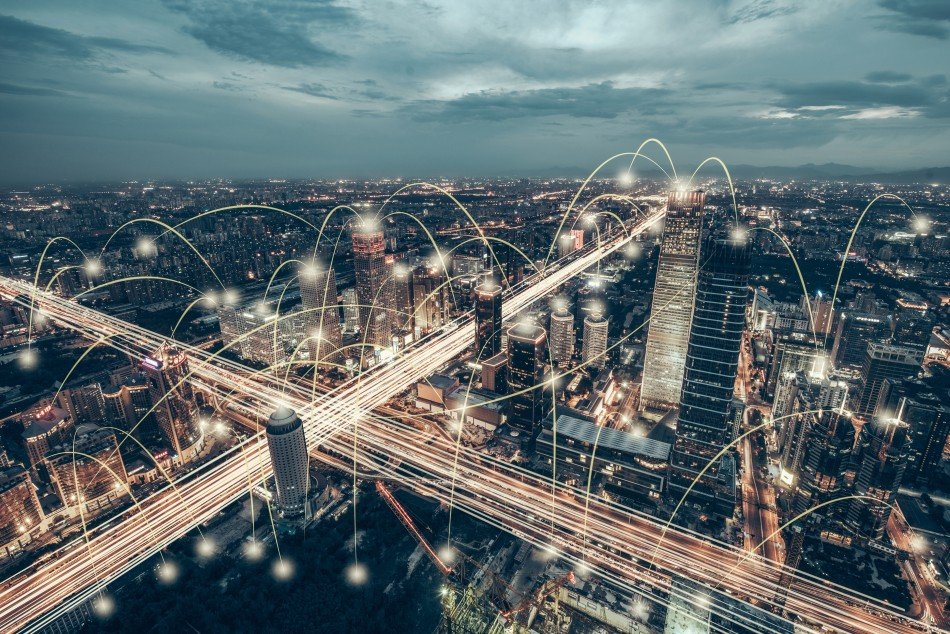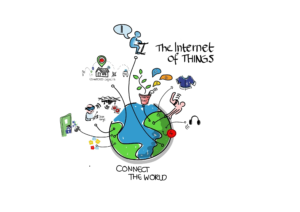Smart City Technology Explained What It Means for Urban Living
Smart City Technology is revolutionizing urban living, offering unprecedented opportunities to create more sustainable, safer, and efficient cities. Imagine a city where traffic flows smoothly, energy consumption is optimized, and public safety is enhanced—all thanks to the seamless integration of cutting-edge technologies. This article delves into the meaning of Smart City Technology and explores how it’s transforming urban environments around the globe. We’ll identify the challenges facing modern urban spaces and then explore the innovative solutions and strategies that smart city technologies provide. The following sections will cover the different components of a smart city, from infrastructure and transportation to public safety and resource management. Each section will include real-world examples and potential future applications.
1. Defining Smart City Technology
1.1 Understanding the Core Concept
Smart city technology encompasses a wide range of digital tools and systems that are integrated to improve urban services and enhance the quality of life for residents. These technologies leverage data analytics, IoT devices, and advanced algorithms to optimize everything from transportation and energy management to public safety and waste disposal. Essentially, smart cities use technology to address complex urban challenges in more sustainable and efficient ways. The basic tenet of smart city technology relies on interconnecting various systems and data streams to provide real-time insights and informed decision-making.
1.2 Key Components of Smart City Technology
Smart city initiatives commonly incorporate a blend of technologies, including smart grids for optimized energy distribution, smart transportation systems for efficient traffic management, and advanced surveillance systems for heightened public safety. Data analytics and advanced algorithms underpin many smart city technologies, allowing cities to identify patterns, predict issues, and make data-driven decisions for better outcomes. Smart city technologies also often involve citizen engagement platforms, enabling residents to actively participate in shaping the city’s development and receive information about city services more easily.
2. Enhancing Public Safety with Smart City Technology
2.1 Intelligent Surveillance Systems
Smart city technologies frequently integrate advanced surveillance systems to improve public safety. These systems leverage video analytics, sensors, and AI-powered algorithms to proactively detect potential threats and respond effectively. For example, many smart city initiatives employ real-time crime analysis platforms, helping police departments respond more quickly to incidents and reduce crime rates. This proactive approach to public safety enhances the overall well-being of residents.
2.2 Improved Emergency Response Systems
Another crucial element of enhanced public safety within a smart city framework is a robust emergency response system. Smart city technologies facilitate the development of integrated communication and coordination systems, allowing emergency responders to receive information rapidly and collaborate effectively in emergency situations. These systems may utilize GPS tracking, predictive modeling, and automated dispatch systems to improve response times.
3. Optimizing Resource Management and Infrastructure
3.1 Smart Grid Technologies
Smart city technologies often involve the implementation of smart grids, which help optimize energy distribution. These advanced grids use real-time data and advanced algorithms to balance energy supply and demand, leading to decreased energy waste and reduced reliance on fossil fuels. Data-driven insights can be used to understand peak usage patterns and implement dynamic pricing strategies, ultimately leading to significant energy savings. For example, the implementation of smart meters can provide residents with detailed energy consumption data, which can enable informed decision-making about energy usage.
3.2 Optimizing Water Management
Smart city solutions can improve water management significantly. These systems collect data from sensors embedded in water pipelines, enabling proactive identification of leaks or potential problems. By using data analysis and predictive modeling, water management systems can identify areas prone to high water consumption and assist in implementation of efficiency measures and water conservation strategies. This proactive approach to water management results in greater efficiency and cost savings for cities.
4. Revolutionizing Urban Transportation
4.1 Integrating Intelligent Transportation Systems
Smart city technologies are also reshaping urban transportation by seamlessly integrating various transportation modes. Real-time traffic data and efficient navigation systems lead to reduced congestion and improved travel times. Dynamic traffic signal adjustments and intelligent traffic management centers are vital components. These technologies empower commuters with real-time information about traffic conditions and available public transport options, helping to reduce travel time and promote sustainability.
4.2 Encouraging Public Transportation Use
Smart city technologies often prioritize the development of robust public transportation systems, making them more efficient and attractive to commuters. This focus on public transportation can significantly decrease reliance on private vehicles, leading to reduced traffic congestion, minimized pollution, and improved energy efficiency. Integration with smart ticketing systems and real-time information displays further enhances the user experience, making public transportation a convenient and sustainable option for residents.
Related Post : How Biotech Is Pushing the Boundaries of Medicine and Healthcare
5. Enhancing Urban Living Experience
5.1 Creating Smart Spaces
Smart city technologies enable the creation of more livable and engaging public spaces. Smart lighting systems adjust based on real-time conditions, reducing energy consumption and enhancing safety. Sensors and real-time data analysis can identify areas needing maintenance and improvements. The addition of interactive digital displays and public Wi-Fi hotspots provides residents with improved access to city services and information.
5.2 Improving Public Services through Technology
Smart city solutions can streamline and enhance various city services, making them more efficient and user-friendly. Residents can utilize digital platforms to access information about city services, pay utility bills, report maintenance issues, and receive notifications related to city events. This seamless integration of technology makes everyday urban life significantly more convenient and less burdensome.
6. The Challenges of Implementing Smart City Technology
6.1 Data Security and Privacy
The implementation of smart city technologies often raises concerns about data security and privacy. Ensuring the safety of sensitive information collected and processed by these systems is of paramount importance. Robust data security measures, including encryption and access controls, are essential for protecting citizen data. Strict adherence to privacy regulations is also crucial for public trust and confidence.
6.2 Infrastructure Investment and Maintenance
Implementing smart city initiatives requires significant infrastructure investment to upgrade existing systems and install new technologies. Careful planning and budgeting are essential to ensure the long-term sustainability and effectiveness of these projects. Regular maintenance and support of these systems are vital to prevent service disruptions and ensure optimal performance.
7. The Future of Smart Cities
7.1 Integration of Emerging Technologies
The future of smart city technology lies in integrating emerging technologies such as artificial intelligence and machine learning, alongside big data and cloud computing. These innovations will further enhance the functionality and efficiency of smart city solutions. Real-time data analysis, automated decision-making, and advanced forecasting capabilities will propel smart cities to new heights of sustainability and efficiency. The integration of emerging technologies will transform urban environments to enhance livability and promote sustainability.
7.2 Shaping Future Urban Living
The evolution of smart city technology will transform the way cities function and improve the quality of life for citizens. By integrating advanced technology into urban infrastructures, smart cities will lead to more efficient resource management, optimized urban services, and enhanced citizen participation in urban development.
8. Smart City Technology in Action
8.1 Case Studies and Examples
Several cities globally have successfully integrated smart city technologies. For example, cities in the Netherlands have implemented comprehensive traffic management systems, leading to significant reductions in traffic congestion and improved public transportation utilization. Singapore, with its advanced smart grid technology, excels in optimizing energy consumption and promoting sustainable practices.
8.2 Global Perspectives on Smart City Implementation
Examining global examples provides valuable insights into the successes and challenges encountered in deploying smart city technology. The adoption of smart city technologies often involves collaboration between government agencies, private sector companies, and community members, creating a multifaceted approach to urban development.
9. Conclusion: Shaping Urban Futures Through Technology
9.1 The Impact of Smart City Technology on Urban Living
Smart city technologies have a significant impact on urban life, transforming how urban spaces function and improve resident experiences. By creating sustainable infrastructures, optimizing resource management, and enhancing public safety, these technologies create more efficient, resilient, and livable environments.
9.2 Future Applications and Innovations
Continuous development and innovation within smart city technologies will further transform urban living and will lead to more efficient cities. Continuous improvement and evolution of these technologies will empower urban spaces with increased sustainability and provide greater safety and comfort to their residents. As technology evolves, so too will the possibilities for smart cities to offer better urban experiences to residents and to serve as models for the future of urban development worldwide. Smart city technology is revolutionizing how urban spaces are designed, managed, and experienced, offering valuable insights into future city planning and development strategies.
In conclusion, Smart City Technology Explained What It Means for Urban Living offers significant improvements to urban life, encompassing sustainable infrastructure, enhanced public safety, and optimized resource management. By embracing these technologies, cities can create more livable, efficient, and resilient environments for their citizens. For a deeper dive, consider exploring smart city initiatives in various global regions, examining case studies of effective implementation, or attending relevant conferences and workshops. Embrace the future of urban living by actively participating in the ongoing development of smart city technologies.
Share this content:














Post Comment